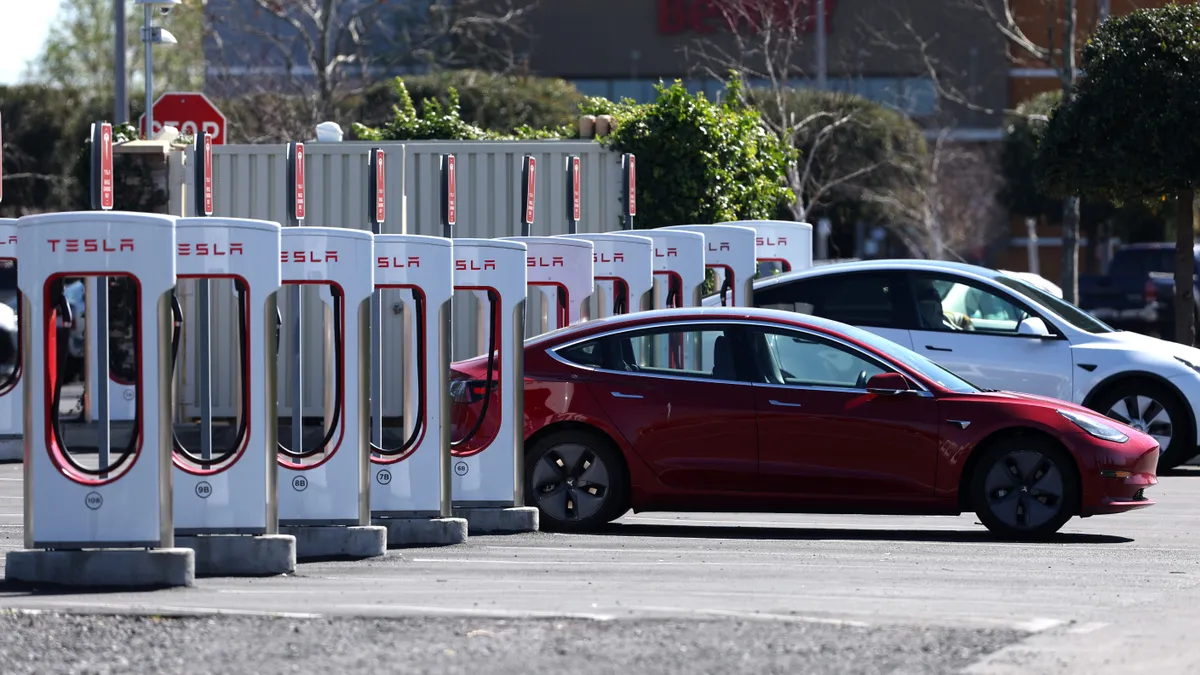Electric vehicle makers across the country spent the summer investing in ambitious supplier deals and production plans to bolster their supply of EV batteries. Skyrocketing demand for the vehicles has highlighted constraints in the supply and processing of minerals needed for EV batteries.
Industry observers warn that global graphite demand could soon outstrip supply, and Tesla CEO Elon Musk is among a number of executives sounding the alarm on lithium processing constraints. At the same time, companies are striving to shift sourcing and production to North America in order to qualify for the Biden administration's EV tax credits under the Inflation Reduction Act.
Here are some of the plans automakers have announced in recent months to keep up with demand and begin to build an EV supply chain in North America.
Facility investments
Perhaps the most frequent strategy among global automakers is investment in their own battery production facilities, many of them in the U.S. The facilities will help companies to shorten their supply chains and qualify for the Biden administration's tax credits.
On Wednesday, Toyota announced it will spend another $2.5 billion on its upcoming North Carolina battery production facility, which will supply batteries for hybrid EVs and battery electric vehicles beginning in 2025. Toyota announced the project last year, with an initial investment of $1.29 billion.
Tesla battery supplier Panasonic is investing nearly $10 billion to establish two battery production facilities in the U.S. The company announced plans in July for a $4 billion facility in Kansas, and is eyeing Oklahoma for its next site, according to a report from The Wall Street Journal.
Expanded sourcing
Ford and GM both announced a spate of new battery supplier agreements in July, expanding their sourcing pools in the hopes of keeping up with production goals.
Ford's deals with suppliers from around the globe will bring the automaker additional lithium, graphite, cobalt and nickel stock. GM also struck multiple deals that include both additional supply and the potential for new production facilities. As part of its six-year agreement with lithium provider LG Chem, GM will explore building a cathode active material plant in North America by 2025.
The same month, Tesla also forged two new supplier deals with China-based companies Zhejiang Huayou Cobalt and CNGR Advanced Material Co. for ternary precursor material, chemicals that store energy for lithium-ion batteries. The deals begin in 2022 and 2023 respectively, and last until 2025, according to stock exchange filings.
Supplier acquisitions and joint ventures
In August, Nikola announced it would acquire energy storage technology company Romeo Power, which focuses on manufacturing lithium-ion battery modules and packs. The deal, which took its next step forward on Tuesday, will bring Nikola's battery pack production in-house. The EV maker hopes the acquisition of Romeo's California facility will help it wield greater operational and cost control over its battery supply chain.
Honda formed a joint venture with South Korea-based LG Energy Solutions last month, part of a plan to produce lithium-ion batteries for the North American market. The two will invest $4.4 billion in a JV battery plant in the U.S. with plans to begin mass production by the end of 2025. Ohio Governor Mike DeWine stated he is pushing the companies to bring the plant to his state.
Government supply agreements
Other companies are striking up deals with governments in a bid to boost opportunities for suppliers across the country. Volkswagen and Mercedes-Benz signed separate agreements with the government of Canada last month to ramp up sourcing efforts in the country.
The agreements will provide the automakers with supplies of lithium, cobalt and other raw materials, and “offer Canadian suppliers an opportunity to act as raw material suppliers, refiners and processors," Volvo said in a statement. Mercedes-Benz will explore mining, refining and cell manufacturing opportunities in Canada as part of its agreement.
This story was first published in our Procurement Weekly newsletter. Sign up here.















